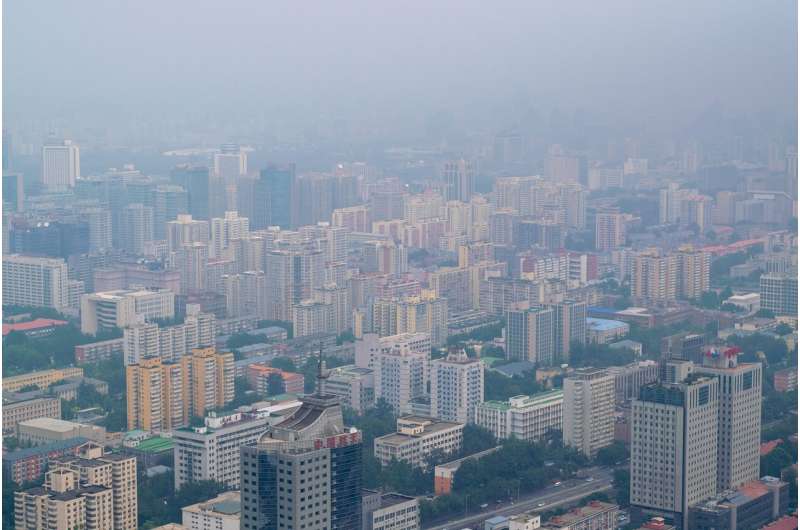Research on regional combustion efficiency in urban Beijing calls for top-down approach

Urban areas account for 2% of the world's land but are responsible for 40%–70% of global anthropogenic, or human-made CO2 emissions. Quantitative fossil-fuel and greenhouse gas (GHG) variation tracking in a city's most densely populated areas is important.
A research group led by Prof. Liu Yi from the Carbon Neutrality Research Center (CNRC), Institute of Atmospheric Physics (IAP) of the Chinese Academy of Sciences (CAS), wrote a call to action for humans to focus on quantifying urban CO2 emissions using top-down methods. They took the regional combustion efficiency in urban Beijing as a study case.
The study was published in Advances in Atmospheric Sciences.
Currently, carbon emissions are assessed by "bottom-up" methods, which are used for emission inventories obtained by aggregating statistical data from relevant economic sectors at a given terrestrial scale relevant for mitigation policy. Bottom-up emission inventories are typically constructed from annual statistics.
Complementary to the bottom-up emission inventories, greenhouse gases (GHG) emissions can be estimated "top-down" using atmospheric measurements and inverse modeling. "This method uses an atmospheric transport model and emission inventories as priori estimates of the surface fluxes for land, ocean, and other CO2 emission attributions," said Che Ke, Ph.D. student at IAP and lead author of the study.
The current air pollution control policies in Beijing are directly related to China's overall pollution reduction goals. To determine the combustion efficiency, or how much carbon and oxygen converts to CO2 rather than CO in a vehicle's combustion reactions, researchers deployed a portable Fourier-Transform Spectrometer at an urban site in Beijing. This apparatus observes column concentrations of CO and CO2, which are used to correlate analyses between CO and CO2 enhancements, thereby providing useful information to quantify combustion efficiency.
The research team also compared the observed combustion efficiency data with the current "bottom-up" emission inventories. They found that the multi-resolution emission inventory (MEIC) and Peking University (PKU) emission inventories are 42.54% and 101.15% higher than the observed values, respectively, indicating that traditional combustion inventory methods underestimate the real values.
"Combustion efficiency in Beijing is easily affected by transportation," said Cai Zhaonan, associate professor at IAP and corresponding author of the study. "Air masses passing over the southern part of Beijing increased the proportion of anthropogenic signal."
This study highlights necessary long-term column measurements in the heavily CO-emitting Beijing region. However, with one station, scientists could only capture limited information on a local scale within a larger urban region. In future research, an intensive CO2 measuring station combined with model data could open up more potential pathways for regional emissions studies.
More information: Ke Che et al, Characterization of Regional Combustion Efficiency using ΔXCO: ΔXCO2 Observed by a Portable Fourier-Transform Spectrometer at an Urban Site in Beijing, Advances in Atmospheric Sciences (2022). DOI: 10.1007/s00376-022-1247-7
Journal information: Advances in Atmospheric Sciences
Provided by Chinese Academy of Sciences




















